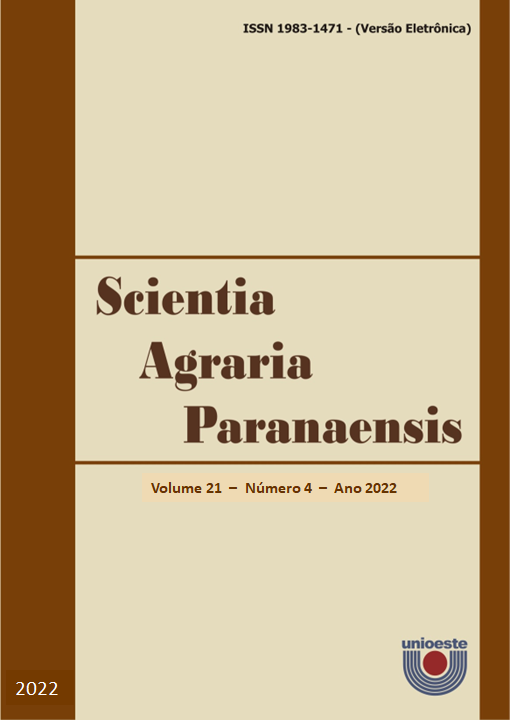Agronomic potential of blueberry cultivars in an organic cropping system in the Brazilian subtropics
DOI:
https://doi.org/10.18188/sap.v21i4.31663Resumen
The lack of information on the agronomic potential of blueberry cultivars in response to edaphoclimatic and biogeographical characteristics limits the establishment of commercial orchards in the producing regions of southern Brazil. Thus, the research objective was to investigate whether the agronomic potential differs among blueberry cultivars in an organic cultivation system in the Brazilian subtropics. The experiment was conducted in the municipality of Lagoa Vermelha, Brazil, from August 2021 to January 2022, in a commercial orchard. The treatments were three blueberry cultivars belonging to the rabbiteye group (‘Bluegem’, ‘Clímax’ and ‘Florida’), arranged in a completely randomized design, with eight replications. Fruit production and quality were evaluated. ‘Florida’ produced the highest number of fruits and had the highest blueberry production and yield. ‘Bluegem’ and ‘Clímax’ stood out in terms of fruiting rate. ‘Bluegem’ and ‘Florida’ had fruits with greater longitudinal diameter. ‘Clímax’ stood out for its larger cross-sectional fruit diameter and for producing blueberries with higher sugar content, lower citric acid content and better palatability. In conclusion, the three blueberry cultivars in organic cultivation system in the Brazilian subtropics differ in terms of their productive potential and fruit quality. ‘Florida’ has the best yield potential and ‘Clímax’ produces blueberries with the best chemical quality.
Descargas
Publicado
Cómo citar
Número
Sección
Licencia
Aviso de Direito Autoral Creative Commons
Política para Periódicos de Acesso Livre
Autores que publicam nesta revista concordam com os seguintes termos:
1. Autores mantém os direitos autorais e concedem à revista o direito de primeira publicação, com o trabalho simultaneamente licenciado sob a Licença Creative Commons Attribution que permite o compartilhamento do trabalho com reconhecimento da autoria e publicação inicial nesta revista.2. Autores têm autorização para assumir contratos adicionais separadamente, para distribuição não-exclusiva da versão do trabalho publicada nesta revista (ex.: publicar em repositório institucional ou como capítulo de livro), com reconhecimento de autoria e publicação inicial nesta revista.
3. Autores têm permissão e são estimulados a publicar e distribuir seu trabalho online (ex.: em repositórios institucionais ou na sua página pessoal) a qualquer ponto antes ou durante o processo editorial, já que isso pode gerar alterações produtivas, bem como aumentar o impacto e a citação do trabalho publicado (Veja O Efeito do Acesso Livre).
Licença Creative Commons
Esta obra está licenciada com uma Licença Creative Commons Atribuição-NãoComercial-CompartilhaIgual 4.0 Internacional, o que permite compartilhar, copiar, distribuir, exibir, reproduzir, a totalidade ou partes desde que não tenha objetivo comercial e sejam citados os autores e a fonte.


